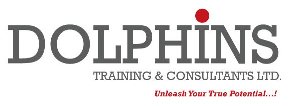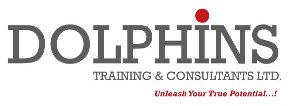
Could it be that our lives and careers are simply a reflection of our Words?
►Is the difference between a millionaire and a billionaire the words they know and use?
►Could the difference between a happy person and depressed person simply be the words they chanted to themselves?
Venue ; Best Western Plus Hotel Westlands - Nairobi
Date; 26th To 30th January 2026 (Five Days)
.jpg)
Venue ; Best Western Plus Hotel Westlands - Nairobi
Date; 26th To 30th January 2026 (Five Days)
.jpg)
.jpg)
Introduction
Today's work environment requires employees to be skilled in performing complex tasks in an efficient, cost-effective, and safe manner. Training (a performance improvement tool) is needed when employees are not performing up to a certain standard or at an expected level of performance. The difference between actual the actual level of job performance and the expected level of job performance indicates a need for training. The identification of training needs is the first step in a uniform method of instructional design.
A successful training needs analysis will identify those who need training and what kind of training is needed. It is counter-productive to offer training to individuals who do not need it or to offer the wrong kind of training. A Training Needs Analysis helps to put the training resources to good use.
Types of Needs Analyses
Many needs assessments are available for use in different employment contexts. Sources that can help you determine which needs analysis is appropriate for your situation are described below.
• Organizational Analysis. An analysis of the business needs or other reasons the training is desired. An analysis of the organization's strategies, goals, and objectives. What is the organization overall trying to accomplish? The important questions being answered by this analysis are who decided that training should be conducted, why a training program is seen as the recommended solution to a business problem, what the history of the organization has been with regard to employee training and other management interventions.
• Person Analysis. Analysis dealing with potential participants and instructors involved in the process. The important questions being answered by this analysis are who will receive the training and their level of existing knowledge on the subject, what is their learning style, and who will conduct the training.Do the employees have required skills? Are there changes to policies, procedures, software, or equipment that require or necessitate training?
• Work analysis / Task Analysis. Analysis of the tasks being performed. This is an analysis of the job and the requirements for performing the work. Also known as a task analysis or job analysis, this analysis seeks to specify the main duties and skill level required. This helps ensure that the training which is developed will include relevant links to the content of the job.
• Performance Analysis. Are the employees performing up to the established standard? If performance is below expectations, can training help to improve this performance? Is there a Performance Gap?
• Content Analysis. Analysis of documents, laws, procedures used on the job. This analysis answers questions about what knowledge or information is used on this job. This information comes from manuals, documents, or regulations. It is important that the content of the training does not conflict or contradict job requirements. An experienced worker can assist (as a subject matter expert) in determining the appropriate content.
• Training Suitability Analysis. Analysis of whether training is the desired solution. Training is one of several solutions to employment problems. However, it may not always be the best solution. It is important to determine if training will be effective in its usage.
• Cost-Benefit Analysis. Analysis of the return on investment (ROI) of training. Effective training results in a return of value to the organization that is greater than the initial investment to produce or administer the training.
Principle of Assessment: Use assessment instruments for which understandable and comprehensive documentation is available.
Knowledge, Skills, and Abilities
Today's workplace often requires employees to be independent thinkers responsible for making good decisions based on limited information. This kind of work may require training if the employee does not have these skills. Below is a list of various competencies that employees may be required to possess in order to perform their jobs well.
• Adaptability
• Analytical Skills
• Action Orientation
• Business Knowledge/Acumen
• Coaching/Employee Development
• Communication
• Customer Focus
• Decision Making
• Fiscal Management
• Global Perspective
• Innovation
• Interpersonal Skills
• Leadership
• Establishing Objectives
• Risk Management
• Persuasion and Influence
• Planning
• Problem Solving
• Project Management
• Results Orientation
• Self-Management
• Teamwork
• Technology
Techniques
Several basic Needs Assessment techniques include:
• direct observation
• questionnaires
• consultation with persons in key positions, and/or with specific knowledge
• review of relevant literature
• interviews
• focus groups
• assessments/surveys
• records & report studies
• work samples
Conducting an Organizational Analyses
Determine what resources are available for training. What are the mission and goals of the organization in regards to employee development? What support will the senior management and managers give toward training? Is the organization supportive and on-board with this process? Are there adequate resources (financial and personnel)?
Conducting a Work / Task Analysis
Interview subject matter experts (SME's) and high performing employees. Interview the supervisors and managers in charge. Review job descriptions and occupational information. Develop an understanding of what employees need to know in order to perform their jobs.
Important questions to ask when conducting a Task Analysis:
1. What tasks are performed?
2. How frequently are they performed?
3. How important is each task?
4. What knowledge is needed to perform the task?
5. How difficult is each task?
6. What kinds of training are available?
Observe the employee performing the job. Document the tasks being performed. When documenting the tasks, make sure each task starts with an action verb. How does this task analysis compare to existing job descriptions? Did the task analysis miss any important parts of the job description? Were there tasks performed that were omitted from the job description?
Organize the identified tasks. Develop a sequence of tasks. Or list the tasks by importance.
Are their differences between high and low performing employees on specific work tasks? Are there differences between Experts and Novices? Would providing training on those tasks improve employee job performance?
Most employees are required to make decisions based on information. How is information gathered by the employee? What does the employee do with the information? Can this process be trained? Or, can training improve this process?
Cognitive Task Analysis
Develop a model of the task. Show where the decision points are located and what information is needed to make decisions and actions are taken based on that information. This model should be a schematic or graphic representation of the task. This model is developed by observing and interviewing the employees. The objective is to develop a model that can be used to guide the development of training programs and curriculum.
Since the training is based on specific job tasks, employees may feel more comfortable taking the effort to participate in training.
Gather information about how the task is performed so that this can be used to form a model of the task. Review job titles and descriptions to get an idea of the tasks performed. Observe the employee performing the job. Review existing training related to the job. Make sure you observe both experts and novices for comparison.
Conducting a Performance Analysis
This technique is used to identify which employees need the training. Review performance appraisals. Interview managers and supervisors. Look for performance measures such as benchmarks and goals.
Sources of performance data:
1. Performance Appraisals
2. Quotas met (un-met)
3. Performance Measures
4. Turnover
5. Shrinkage
6. Leakage
7. Spoilage
8. Losses
9. Accidents
10. Safety Incidents
11. Grievances
12. Absenteeism
13. Units per Day
14. Units per Week
15. Returns
16. Customer Complaints
Are there differences between high and low performing employees on specific competencies? Would providing training on those competencies improve employee job performance?
Checklist for Training Needs Analysis
It is helpful to have an organized method for choosing the right assessment for your needs. For example, is the assessment valid for your intended purpose? Is it reliable and fair? Is it cost-effective? Is the instrument likely to be viewed as fair and valid by the participants? Also consider the ease or difficulty of administration, scoring, and interpretation given available resources.
Training and Development Needs Analysis Checklist
Your training needs analysis should include the following:
• Know what the organization is trying to accomplish.
• Know the history of training within the organization.
• What "needs" will be addressed by the training?
• Any recent process or procedure changes?
• What resources are available for training?
• Who needs to be trained?
• Who can serve as subject matter experts?
• Is any staff going to do the training?
• Which companies provide training materials?
• What are the Knowledge, Skills, and Abilities?
• Review Job Descriptions and Org Charts.
Compiled by,
Bernice Kanini - Client Relations
bernice@dolphinsgroup.co.ke
Dolphins Training & Consultants Ltd
Dolphins Group
Venue ; Best Western Hotel Wstlands - Nairobi
Date; 26th To 30th January 2026 (Five Days)
.jpg)
Venue ; Best Western Hotel Westands - Nairobi
Date; 26th To 30th January 2026 (Five Days)


.jpg)
.jpg)

.gif)


.jpg)
.jpg)


.jpg)